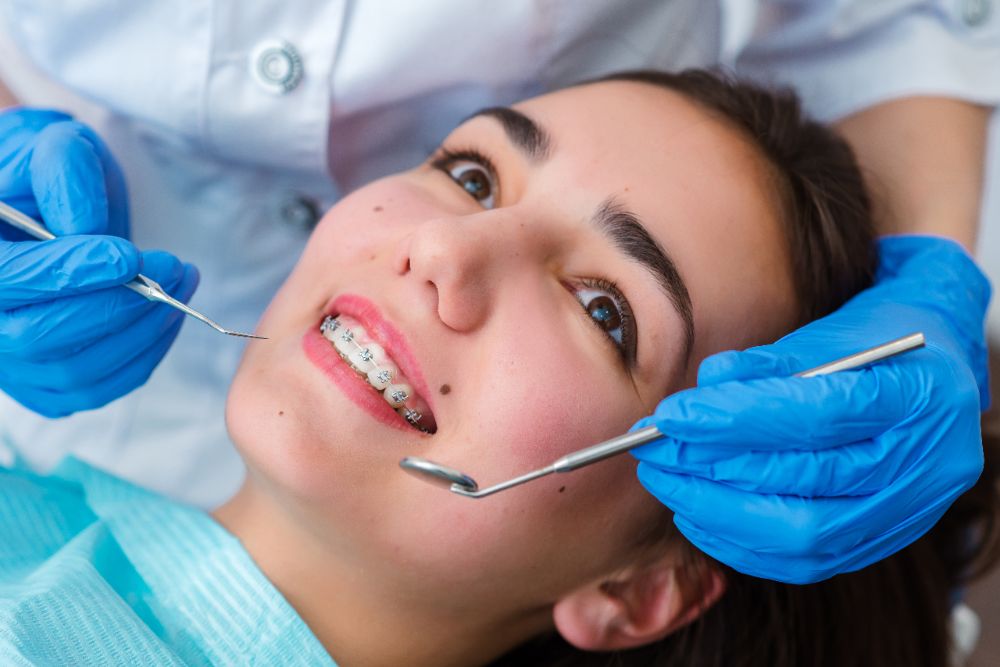Comprehensive Overview to Orthodontics Treatments for Dealing With Dental Imbalances
Comprehending the ins and outs of each procedure, including their mechanisms, advantages, and potential disadvantages, is vital in making informed decisions about one's orthodontic therapy. As we navigate via the comprehensive guide to orthodontic procedures for fixing oral imbalances, the complex details of each technique will unfold, dropping light on the course towards a harmonious and practical oral alignment.
Orthodontic Procedures Introduction

Along with typical braces and clear aligners, orthodontists may additionally advise various other treatments like headgear, palatal expanders, or retainers to address particular placement concerns (braces). These procedures are tailored per client's unique needs and may involve a mix of treatments to achieve the wanted results. Routine modifications and tracking are crucial components of orthodontic therapy to make sure progression gets on track and to make any type of required modifications in the process. By undertaking orthodontic procedures, patients can not only accomplish a straighter grin yet likewise enhance their overall oral wellness and feature.
Standard Dental Braces: How They Work
When thinking about orthodontic treatments for oral misalignments, traditional dental braces stand out as a tried and true method for dealing with teeth placing. Standard dental braces are composed of brackets, cords, and bands that work with each other to apply continuous stress on the teeth, slowly relocating them into the preferred placement.
As stress is used to the teeth with the dental braces, the bone surrounding the teeth is reshaped to sustain the new tooth placements. Individuals will require normal adjustments at the orthodontist's workplace to make sure the dental braces continue to apply the proper stress for efficient teeth activity.
Unnoticeable Aligners: Cons and pros
These clear, customized trays are basically undetectable when used, making them an attractive option for individuals looking for a more aesthetically pleasing orthodontic treatment. People can remove the aligners before consuming or cleaning their teeth, reducing the threat of food getting stuck in the home appliance and streamlining the cleansing process.

Surgical Orthodontic Options
Surgical interventions in orthodontics present viable options for resolving complex oral misalignments that may not be properly dealt with through conventional orthodontic treatments. While traditional dental braces and unseen aligners can remedy many orthodontic concerns, specific instances require surgical treatment to attain optimum outcomes. Surgical orthodontic options are typically suggested for serious malocclusions, significant jaw inconsistencies, and cases where the underlying bone structure needs alteration to attain correct alignment.
One common medical orthodontic treatment is orthognathic surgery, which entails rearranging the jaws to deal with useful problems such as difficulty eating or speaking. This surgical procedure is usually executed in cooperation with an orthodontist my sources that helps straighten the teeth prior to and after the procedure. Surgical orthodontics may additionally entail treatments to reveal influenced teeth, remove excess periodontal cells, or reshape the jawbone to develop an extra unified facial account.
Prior to taking into consideration medical orthodontic alternatives, patients go through a thorough evaluation to figure out the need and prospective advantages of such interventions. cumming aligners. While surgical procedure may appear daunting, it can considerably improve both the function and visual appeals of the smile in instances where conventional orthodontic therapies drop short
Retainers and Post-Treatment Treatment

Failure to comply with post-treatment treatment instructions can result in regression, where the teeth gradually relocate back towards their initial positions. Constant retainer wear, good dental hygiene, and regular oral exams are crucial for preserving the outcomes accomplished through orthodontic surgical procedure and making certain the long-lasting stability of the corrected dental alignment.
Verdict
Finally, orthodontic procedures offer numerous alternatives for correcting dental imbalances. Conventional braces make use of metal brackets and cables to change teeth into proper positioning. Undetectable aligners provide a more very discreet alternative yet may not appropriate for all situations. Surgical orthodontic choices are available for more extreme imbalances. Retainers are frequently made use of post-treatment to preserve the brand-new positioning. Overall, orthodontic treatments can efficiently enhance dental wellness and visual appearance.
As we browse with the detailed guide to orthodontic treatments for fixing dental imbalances, the detailed details of each method will unfold, dropping light on the path towards a useful and harmonious dental alignment. - invisalign
One of the most usual orthodontic treatments is the use of braces, which are composed of metal brackets and cables that use mild pressure to slowly shift teeth right into the wanted setting.When taking into consideration orthodontic therapies for dental misalignments, typical braces stand out as a reliable approach for dealing with teeth positioning. Additionally, invisible aligners may not be appropriate for complicated orthodontic problems that require more significant teeth motion, as they are normally recommended for mild to modest situations. Retainers are customized orthodontic tools made to hold teeth in their dealt this hyperlink with positions after the completion of orthodontic treatment.